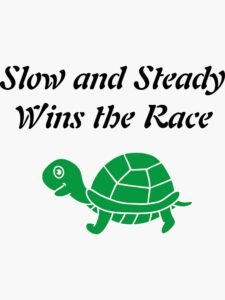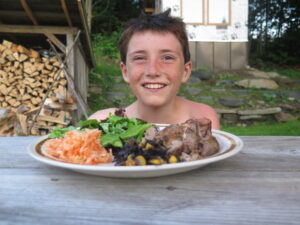B.E.D. Healing Journal Entry #2: Tracking Food Culprits
Tara Carpenter, NC.
Nutritional support worldwide for digestive-related health issues; especially yeast overgrowth with Body Ecology Diet (B.E.D.).

Written on September 12, 2010.
Well, combining watermelon with much of anything certainly messed with my stomach! This is something new I learned since beginning The Body Ecology Diet (B.E.D.) a mere 3 days ago. Here I am though on stage 1 of this eating plan, narrowing down my food options and actually for the first time in a while excited because I have struggled this past year with my digestion, especially bloating, and had a heck of a time tracking down the exact foods bothering me most.
I was diagnosed with systemic yeast overgrowth (Candida throughout body system) this week by my doctor and have decided to use Body Ecology Diet book to heal myself from this stubborn infection. I won’t go into this diet too much at the moment for I am still digesting everything (literally!). What I will say is B.E.D. is an antifungal, antibacterial, antiviral way of eating with a step-by-step process for people to get on track with.

Tracking down food culprits entails keeping a ‘food journal’, doing rotation diets, and of course elimination diets.

Near every day for last year, I have made note of every single thing I put in my mouth. To no avail. While food journaling does help me see some of the foods causing me discomfort, I have not found a pattern by which to connect the dots in a breathing out yes that’s it! kind of way. For instance, before starting B.E.D. this week I noticed that brown rice makes my stomach bloated; sunflower seeds double me over in pain, and apples fill my ears with fluid that become terribly itchy.
What could be more harmless than rice, seeds, and apples? All seemingly neutral foods not considered to be common allergens.
Now I know (from reading B.E.D. book) that these foods, along with others, are high in natural starches and sugar that easily feed the yeast (a.k.a. Candida albicans) in my gut. Because I have been diagnosed with systemic yeast infection then this means I have too much yeast throughout my body. Not just in my vagina. Also my mouth, throat, ears, really any opening stemming (I think) from excessive activity “yeast overgrowth”. We women often think of yeast infections being solely in the vagina. This is not the one and only place, only the most uncomfortable. Yet, relatively simple to deal with I have learned.

Though my intent to track down my food sensitivities was well-intentioned and my record keeping impeccable, I see now I have been going about things in a way that aren’t bringing me understanding. Rather then bring focus to the aliveness live activity in my gut of beneficial bacteria, I was instead in circles locating individual foods and food groups as the source of problem. My mind was set on labeling foods I must be “allergic” or “intolerant” or “insensitive” to so I could eliminate them and feel relief.

Had I continued to not give focused attention to the overgrowth of yeast living in my digestive tract, I might never feel better because the food I was eating were the ones that the excess yeast will thrive/feed on and cause me pain with bloating, stomachache, and also continue to contribute to these bad/pathogenic organisms growing in population … basically anything sweet, too starchy, or improperly combined.
Already 3 days into The Body Ecology Diet I feel MUCH better. I know where to look now (my gut flora) and the how to’s is very well-described in the B.E.D. book which appears to be updated. You could not have paid me a million bucks to believe I would feel so much relief so quickly.
I have set up a nutritional consultation with the founder of B.E.D., Donna Gates, and taking notes on how I am adjusting in these early days of what feels to be a way forward to feel better in my stomach primarily. I would like to eventually weave my children into eating this way with me for the sake of simplicity. They also both have a couple health issues chronically going on for long enough now that I have had no direction with.
Time will tell, step by step 🙂

Nutritional Consultations with Tara Carpenter, NC.
Harmful yeast in particular especially like when the host (in this case, me) eats gluten, sugar, and yeast. Any food with one of these in it is out of the picture for about 3 months. These are the foods to avoid to starve out the yeast and allow good gut flora to return to a natural balance (homeostasis) is what I am learning from reading the B.E.D. book cover to cover.
Without looking at the overgrowth going on in gut, the harmful yeast would have continued to crowd out the beneficial flora that should be living in my gut in balanced proportions helping to assimilate and absorb food. When gut flora are allowed to colonize in such great numbers, they burrow small ‘pockets’, or holes, in the small intestine lining.
This condition is called leaky gut syndrome and allows undigested food particles to pass through and into the bloodstream where they can cause uncomfortable symptoms and allergic reactions, both of which only add further confusion to an already tough situation.
Is yeast overgrowth causing you problems? Take quiz to find out.

Now I know that the foods I’ve been eating all this time were feeding excess yeast organisms and helping them to thrive. Though I stopped eating gluten and refined sugar two years ago after my youngest was born, I was eating yeast foods on a daily basis (i.e. tempeh, mushrooms, tamari). I also ate brown rice, beans, mochi, and fruit which contain natural sugars the yeast happily devour.
I’ve been eating these foods for years and regarded them as healthy and wholesome. I never thought twice about them being a source of my health problems. Now I understand that any food containing gluten, sugar or yeast is going to cause me, someone trying to heal a stubborn case of systemic yeast overgrowth many problems. A sigh of relief to have direction to feeling better in my tummy!
Half the battle in overcoming a problem is naming its cause.

B.E.D. Healing Journal Entry #1: My Candida Diagnosis
Understanding Food Intolerance
B.E.D. Nutritional Support
This blog post may contain affiliate links, read here to learn more.
May all bellies be happy!

